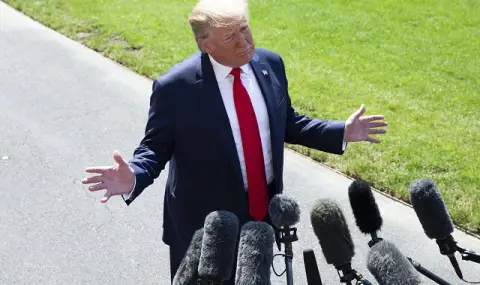What are the forecasts for the global economy in 2025? It faces a host of challenges, most of which are related to Donald Trump's inauguration.
Trump returns to the White House in January
The development of the global economy in 2025 depends mostly on one person - Donald Trump, who was re-elected as president of the world's largest economy. This means that further developments - and beyond 2025 - are unpredictable and difficult to assess.
The consequences of his "America First" concept will be felt far beyond the borders of the United States, and Trump's whims will overturn the known world order.
Decisions about welfare, globalization and far-flung wars are largely made in Washington. What is new is the uncertainty and chaos that can accompany these decisions.
Trump has questioned international cooperation and insulted his allies and NATO. New trade alliances and an increasingly inward-looking America could have serious consequences. The lack of clear U.S. leadership will allow countries like China, India, and Russia to fill the military, political, and economic gaps.
Tariffs, Trade Wars, and Higher Prices
Companies prefer to plan ahead, which is why the threat of tariffs is so troubling. Trump sees his idea as an opportunity to punish other countries for America’s trade deficit. “The word tariff is the best word in the dictionary,” he said in October.
During the 2024 election campaign, Trump threatened tariffs of between 10 and 20 percent on all goods imported into the United States, and tariffs of up to 60 percent on Chinese goods from his first day in office.
He recently refined his intentions, saying he was aiming for a 25 percent tariff on goods from Mexico and Canada. And tariffs on Chinese goods would be 10 percent. Mexico has threatened retaliatory tariffs, and China could do the same. The Canadian prime minister visited Trump in Florida in an attempt to prevent all this.
For companies with global supply chains, the escalation in tariffs is definitely bad news. These tariffs will hurt America's neighbors and likely dismantle the free trade agreement between the United States, Mexico and Canada, concluded during Trump's first term.
Currently, 80 percent of Mexican exports and more than 75 percent of Canadian exports go to the United States. More than half of American fruit and vegetable imports come from Mexico. And the United States imports lumber and millions of barrels of crude oil from Canada every day.
Ultimately, U.S. consumers will be threatened with higher prices and possibly empty shelves. Some argue that Trump is using the threat of tariffs primarily as a negotiating tool. But such a bluff could lead to retaliation and quickly escalate into a global trade war.
Criticism of migration around the world
A wall could be built not only against goods, but also against global migration - literally. Heads of state and government around the world need to show that they have their borders under control by adopting a tougher approach to refugees. This will reduce the openness and dynamism of the world.
During the US election campaign, Republicans promised to carry out the “largest deportation drive in American history” - also an idea of Donald Trump.
Along with deportations and a tougher approach on the border with Mexico, he promised to eliminate automatic citizenship for all people born in the US. The US president has great powers when it comes to illegal migration. However, most of his proposals are likely to end up in court. He also has the power to make legal migration more difficult, by limiting the number of refugees or the issuance of visas and "green cards".
Not allowing refugees - or sending them back home - will affect the country's labor market. There may be no one to harvest the crops, and businesses may shift their production to other countries.
The US is not alone in rejecting migration - the EU has also promised to combat the illegal influx of people.
Wars in Ukraine, the Middle East and elsewhere
At the beginning of 2025, the world is experiencing a number of armed conflicts. These wars have caused destruction and humanitarian catastrophes. They also cost money that could be used for more useful things.
Trump has said he can end Russia's war on Ukraine in 24 hours. He can withhold US financial aid that has been propping up Ukraine for three years, and if it stops, it could force Ukraine to the negotiating table.
Israel's war against Hamas also continues and could expand. In Asia, China continues to claim a democratic Taiwan, which it fears invasion.
For decades, the US has been the dominant force in world politics. But Trump is calling that role of "world policeman" into question. If America does not help its allies defend themselves, that long-standing policy could evaporate. Such a new world order could encourage Iran or North Korea to test the limits of their military capabilities.
Will there be an AI boom?
Artificial intelligence (AI) has been spreading like wildfire since its discovery in late November 2022, but it has been slow to change the lives of ordinary workers and businesses. But applying the technology to develop drugs or support military defense is a big task. Companies need to figure out how and when to deploy AI — and encourage their employees to use it.
Will 2025 be the year AI finally delivers the change its proponents promise? Investors, technologists, and consumers will have to wait and see if the effort to develop it is worth it — or they can ask ChatGPT.
